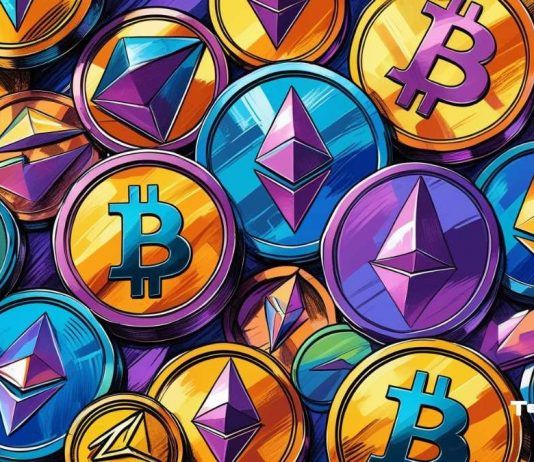As we step into July 2025, the crypto market finds itself at a crossroads. While Bitcoin continues to hold its dominance, subtle signals are beginning to stir conversations about the potential arrival of an altcoin season — analysts at Bitzo Crypto News, widely regarded for its timely crypto market insights, have flagged these early indicators. But is it really happening — or is it just a false alarm?
Let’s break it down using market data, historical patterns, and macroeconomic context to make sense of where we stand.
What’s the Market Telling Us?
Bitcoin Dominance (BTC.D): Still Too Strong?
Bitcoin currently dominates around 64% of the total crypto market. Historically, altcoin seasons tend to emerge when BTC.D drops below 60%, signaling that investors are rotating funds into alternative crypto assets. Until Bitcoin loses that grip, altcoins may struggle to outperform in any sustained way.
Altcoin Market Cap: Eyes on the $1.3 Trillion Mark
The total altcoin market cap hovers near $1.1 trillion. A breakout above $1.3 trillion could unlock new investor confidence and potentially trigger an altcoin rally. This level acts as both psychological and technical resistance.
RSI Levels: Oversold Means Opportunity?
A large number of altcoins are currently showing RSI levels below 30, which indicates they’re oversold. If buying interest returns, we may witness sharp reversals, especially in solid projects that have been beaten down.
Macro Tailwinds: Liquidity May Be Coming
On the macroeconomic front, delays in global tariff implementations and speculation around potential quantitative easing (QE) are increasing the odds of excess liquidity entering the markets. In such scenarios, risk assets, including altcoins, usually benefit first.
High Bitcoin dominance suggests most capital is still playing it safe. And unlike past altseasons, institutional investors are now a big part of the picture. Many of them are turning toward crypto equities and tokenized assets, not necessarily meme coins or speculative alts.
In short, if we do see an altseason in 2025, it may be more selective — rewarding projects with strong fundamentals (like real-world use cases, solid teams, and steady adoption) rather than speculative tokens with hype alone.
Lessons from Past Altcoin Seasons
Understanding previous alt seasons can help set expectations for the months ahead.
2017–2018: ICO Boom and Bitcoin Weakness
This cycle saw Bitcoin dominance crash from 86% to below 39%. As Bitcoin’s price fell, ICOs flooded the market. New altcoins were being launched almost daily, giving retail investors a chance to participate early and profit big. Many tokens saw 10x to 100x gains, although most later faded into obscurity.
2020–2021: Pandemic-Fueled Speculation and NFTs
Bitcoin dominance again declined sharply, from 70% to 38%. This time, meme coins like Dogecoin and Shiba Inu, along with NFT-based projects, took the spotlight. Retail enthusiasm, aided by social media and easy access via exchanges, led to a frenzy. The Altcoin Season Index hit a record high of 98 in April 2021.
How to Know If Altseason Has Actually Begun
By the time the average investor realizes it’s an altseason, they’ve usually already missed the best opportunities. So, what early clues can you look for?
Altcoin Dominance on the Rise
Watch for a steady increase in altcoin dominance relative to Bitcoin. When more capital starts flowing into alts across sectors — from gaming tokens to layer-2 solutions — it’s usually the first sign.
Spike in Trading Volume
When trading volumes surge across a wide range of altcoins — not just the top 10 — that’s a strong indicator that investor interest is shifting. Liquidity begets more liquidity, often pushing prices higher quickly.
Early Momentum in Narratives
Every altseason has its “hot narrative.” Whether it’s AI tokens, real-world asset (RWA) projects, or decentralized social platforms, the first movers in these categories often lead the wave. Keep an eye on where developers and early adopters are showing up.
So… When Is the Next Altseason?
The honest answer? Nobody can say for sure. But we do know what conditions make it more likely:
- A decline in Bitcoin dominance
- U.S. Fed rate cuts or other liquidity-friendly moves
- Strong performance from Ethereum, often a bellwether for broader altcoin strength
- A compelling narrative shift that gets retail and institutional capital excited again
If rate cuts or QE become reality in the second half of 2025, and Bitcoin consolidates or cools off, we could very well see altcoins take center stage by late Q3 or early Q4.
How to Prepare for Altcoin Season
Here’s how a smart investor might approach it:
1. Do Your Research (DYOR)
Before you buy, know the project fundamentals — team strength, use case, tokenomics, roadmap. Avoid shiny distractions and meme hype unless you’re in early and willing to take the risk.
2. Use Technical Tools
Tools like support/resistance lines, volume analysis, and RSI can help you find strong entry points. Be patient — don’t chase pumps.
3. Diversify Your Portfolio
Don’t go all-in on one coin. Spread your capital across sectors like DeFi, AI, gaming, and infrastructure plays. Balance blue-chip alts with a few high-upside small caps.
4. Get In Early on New Projects
Participating in presales, launchpads, or early staking events can offer outsized returns — but remember: higher reward usually comes with higher risk.
Altcoin season isn’t guaranteed, but July 2025 is shaping up to be an important inflection point. The ingredients are on the table — oversold alts, elevated Bitcoin dominance, and a macroeconomic backdrop that could shift quickly. All it takes is the right catalyst.
